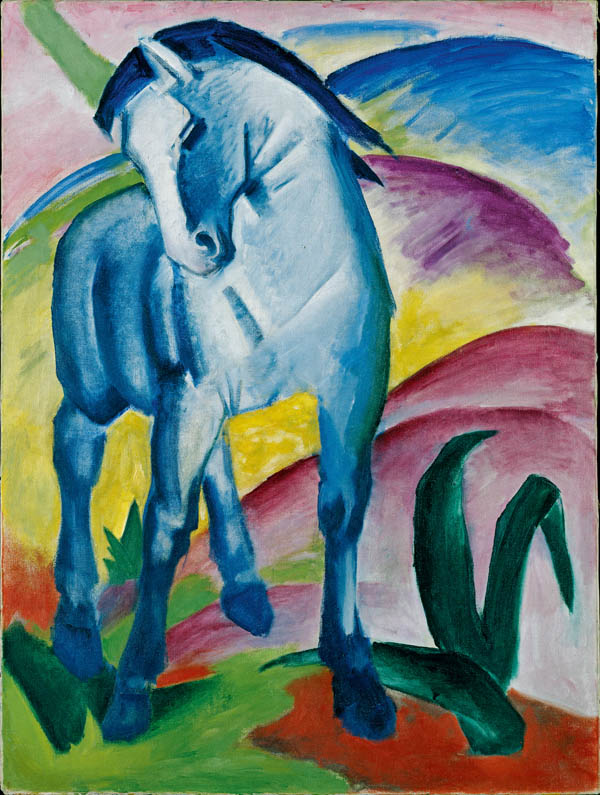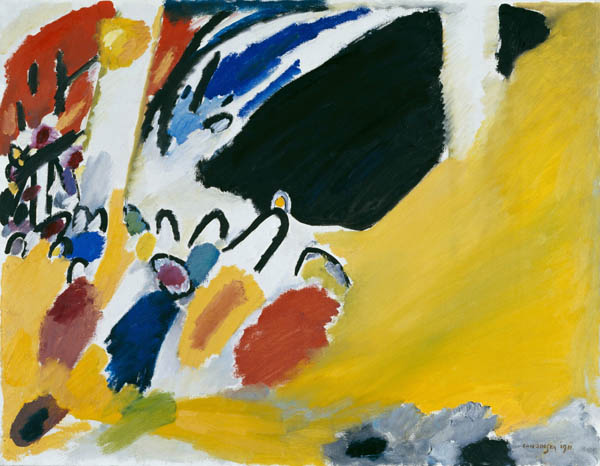Lenbachhaus Gallery (Städtische Galerie im Lenbachhaus und Kunstbau München)
has the world's largest 
important bridging movement of the artistic avant-garde at the beginning of the
20th century, founded in Munich in 1911 by Wassily Kandinsky and Franz Marc.
Franz Marc, Blue Horse I, 1911
The Collection
The gallery is housed in the central Munich residence of 19th century German Realist painter Franz von Lenbach. The gallery reopened in May 2013 after four years of refurbishment and construction and has been transformed both inside and out.
The core of the collection is the endowment made by the painter Gabriele Münter, companion of artist Wassily Kandinsky until 1914. She bequeathed more than a thousand works from the ‘Blue Rider’ movement to the gallery.
‘Blue Rider’ was a largely German Expressionist group. However, in 1911 Kandinksy painted ‘Bild mit Kreis’ (Picture with a Circle), completing the development from Post-Impressionism, Expressionism and Fauvism to a new movement of which he is considered the father, Abstract Art.

Wassily Kandinsky, Impression III (Concert), 1911
The collection contains 90 oil paintings by Kandinsky, plus around 330 watercolours and drawings, his sketchbooks, reverse glass paintings and printed oeuvre.
The bequest includes more than 25 paintings and 200 works on paper by Münter herself, with her entire printed oeuvre as well as works by artist friends such as Franz Marc, August Macke, Alexej Jawlensky, Marianne von Werefkin and Paul Klee. This collection identifies the Städtische Galerie im Lenbachhaus as a world-class museum.
![]()
Paul Klee Rosengarten1920
Lenbachhaus also holds numerous works from the 19th century Munich School and a substantial collection of works of international of contemporary art, including Joseph Beuys, Gerhard Richter, Isa Genzken, Sigmar Polke, Dan Flavin, Olafur Eliasson, Thomas Demand, and Sol LeWitt.
After the acquisition of two major environments by Joseph Beuys in 1979 and 2012 and the donation to the museum of important sculptures the artist created between 1948 and 1972, Beuys’ art now constitutes a new focus of the collection. His works have been set up in Lenbach’s studio.
The museum regularly changes the arrangement of the works into new groups, to bring out unexpected interactions. Every visit to the Lenbachhaus promises a varied experience of works and no two visits will be the same.
Sean De Siun


